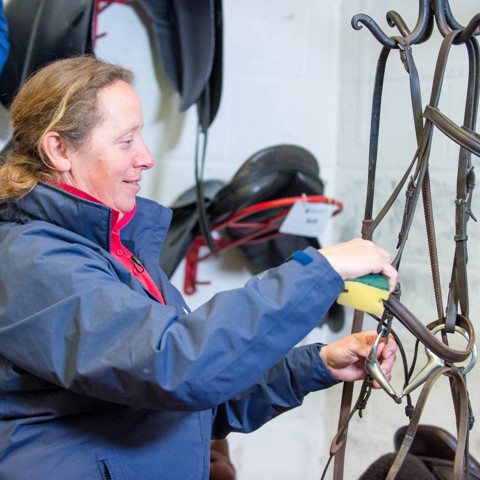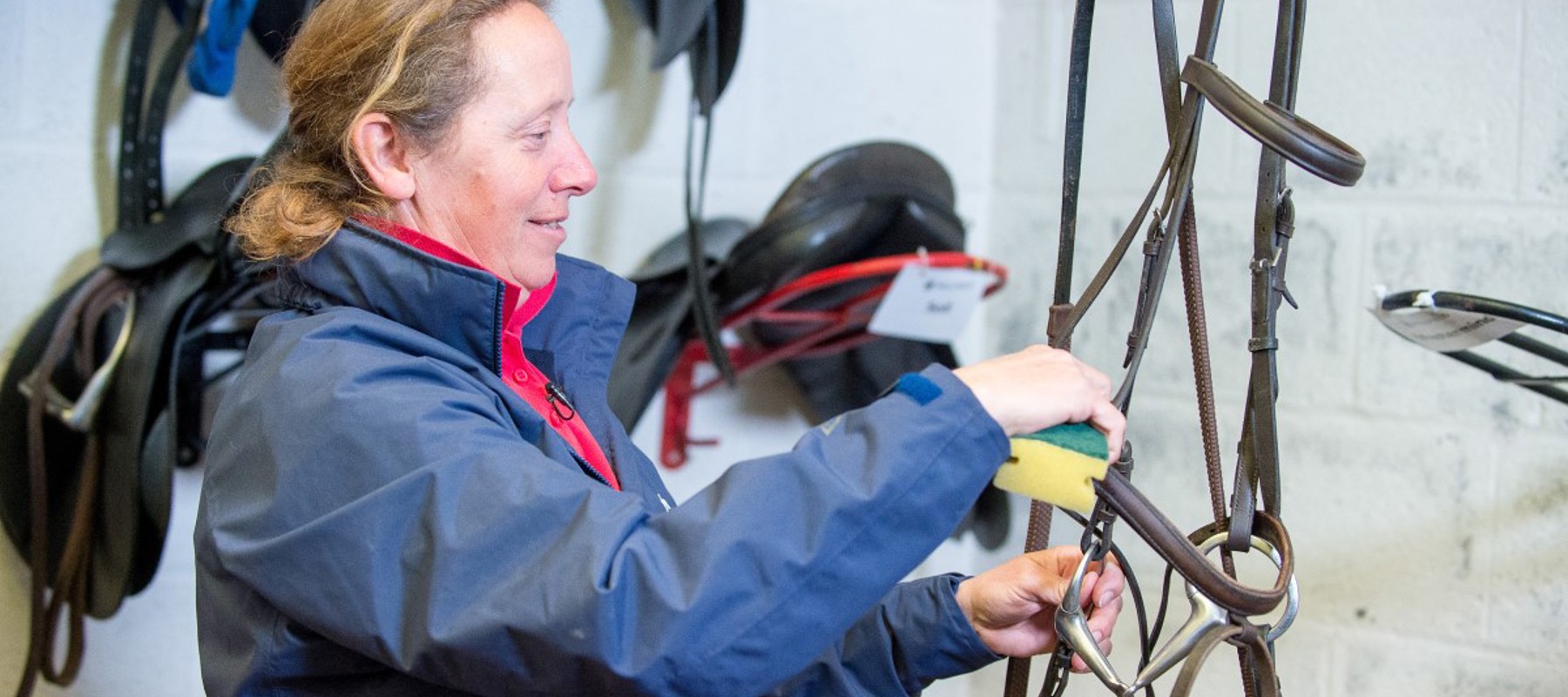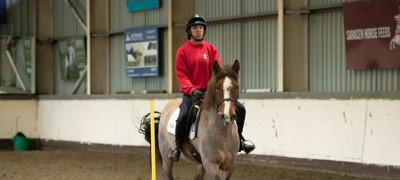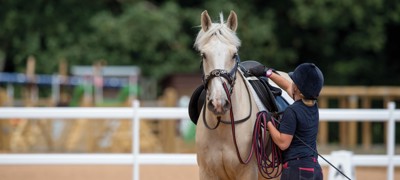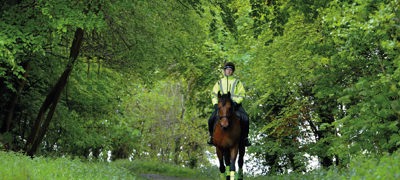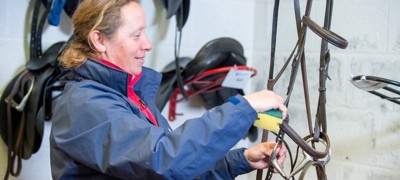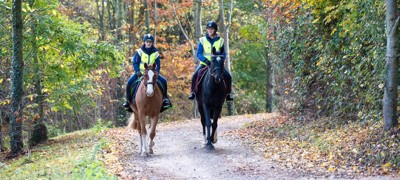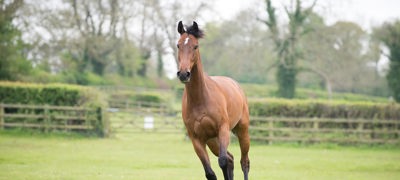Saddles
A poorly fitting saddle can make your horse uncomfortable and cause pain, pressure points or lameness. It can also be uncomfortable for the rider and unbalance them or cause them pain.
Weight gain or loss, the amount or type of work they do, the age of your horse and the time of year can all have an impact on your horse’s size and shape and therefore the way their saddle fits.
Checking the saddle for comfort
It is important to get your horse’s saddle checked at least twice a year by a Society of Master Saddlers (SMS) Qualified Saddle Fitter. But in between visits from the saddle fitter, there are signs to look for as you tack up to check how the saddle is sitting on your horse’s back.
Watch below as SMS Qualified Master Saddle Fitter Steph Bradley takes you through the key areas to assess when checking the fit of your saddle and what you should expect from your horse’s saddle assessment.
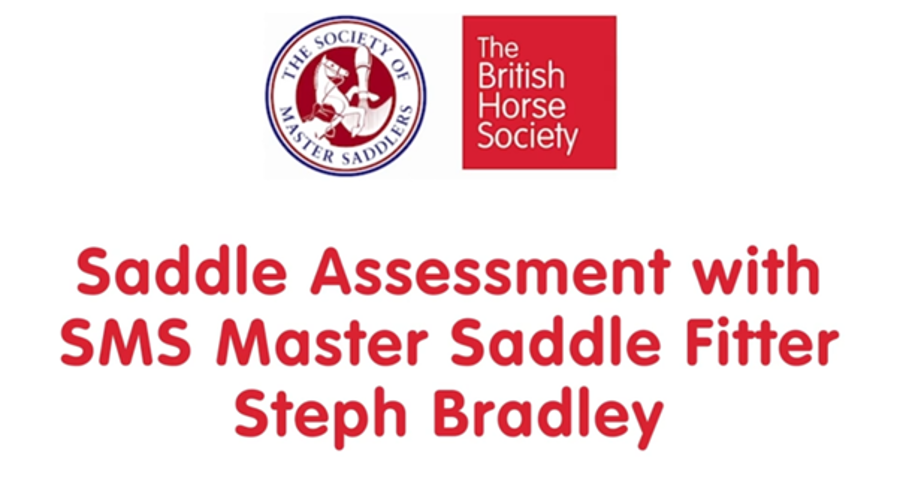 play-circle
play-circle
Watch
Saddle Fit
Checking the bridle for comfort
It is good practice to check the fit of the bridle each time you put it on, especially if the horse is not yours, as the bridle may have been taken apart for cleaning and not put back together correctly.
Points to check the fit of a bridle include:
- The bit should be level in your horse’s mouth while sitting high enough to create a wrinkle in the corner of their lips
- A noseband should not be used to keep the horse’s mouth closed – over-tight nosebands are something commonly seen. On a correctly fitting noseband you should be able to get at least two adult fingers or the ISES gauge under the noseband on the front of the nasal bone - whatever style of noseband you use.
- The browband should not pinch the horses ears and should be wide enough to fit two fingers between its centre and their forehead
Learn more about your horse’s bridle fit from SMS Qualified Bridle Fitters Frances Roche and Catherine Baker
Types of noseband
A cavesson, or crank noseband should be fitted with two fingers space below the projecting cheekbone. If you use a noseband that sits below the bit, the front should not sit so low that it impedes the soft part of the nostrils. Horses can only breathe through their nose so if you impede the nostrils, you restrict the horse’s breathing and their ability to perform.
If the noseband is fastened tightly around your horse’s nose it will push the fleshy part of the gums against their teeth which would be painful for them.
Having your horse’s teeth checked a minimum of once a year will also avoid sharp points from developing and help to prevent injuries inside the horse’s mouth.
Cavesson
chevron-down
chevron-up
A cavesson noseband is a single wide strap that fastens around the middle of your horse’s nose. It has little action and is used mainly for aesthetic reasons. It should be fitted approximately two fingers width below the projecting cheekbone, sit under the cheekpieces and fasten under the jaw.
Drop
chevron-down
chevron-up
A drop noseband sits across the bony part of your horse’s nose and puts pressure on the top of the nose and chin groove when their mouth is opened. The lower straps of the drop noseband sit in front of the bit and fasten under the chin groove. It should be fitted high enough so that it does not interfere with your horse’s breathing.
Following research, the drop noseband has been redesigned and now has curved shaping or features two rings to make this type of noseband more humane.
Flash
chevron-down
chevron-up
A flash noseband is made up of a cavesson noseband with an extra thinner strap attached to the bottom of it. The cavesson is fitted slightly higher than normal and the flash strap fastens in front of the bit. As it has two straps, it spreads the pressure around the nose and the chin groove.
Grackle
chevron-down
chevron-up
With a grackle noseband the top straps sit under the cheekpieces fastening under the cheekbones and the lower strap sits in front of the bit and fastens in the chin groove. The cross-over point should sit on the centre of the nose. If the grackle has rings these should not interfere with the projecting cheekbones.
Running martingale
A running martingale is attached to the reins to stop your horse from lifting their head up past the point of control when being ridden. It consists of two straps: one sits around the horse’s neck; the other threads between your horse’s front legs and attaches to the girth at one end and splits into two straps which have metal rings at the end for the reins to pass through.
When using a running martingale, the reins must have rein stops on them to stop the metal rings from sliding too far up and becoming tangled in the bit rings.
To check the fit of a running martingale you should be able to fit four fingers in between the neck strap and the top of the neck. The short straps with the rings on the end should reach from the centre of the chest to just under the throat.
Breastplate
A breastplate is used to prevent the saddle from sliding back when your horse is working. You are most likely to see it in cross country competitions where the horses are galloping and jumping and it is possible for the saddle to move.
Similar to a martingale, it has a strap that threads through the horse’s front legs and attaches to the girth. It is attached to the saddle by short straps which thread through the D rings and some designs have extra straps which attach to the girth straps on either side.
To check the fit of a breastplate you should be able to fit four fingers between the top of the neck and the neck strap and a fist between the centre of the breastplate and the chest.
Before buying any extra bits of tack for your horse speak to your coach to ensure they are necessary.
Bits
The bit in your horse’s mouth forms part of your communication with your horse, along with your weight/seat, leg and rein aids. All bits work by placing pressure on one or more areas of your horse’s mouth and head.
Everything you do down the reins is felt by the horse through the bit, which is why it is important to have a soft elastic contact. Even the mildest of bits can potentially be uncomfortable to your horse if the hands at the end of the reins are rough.
It is important to remember that all horses are different and a bit that suits one horse may not suit another. Whatever bit you use must be fitted correctly to make sure your horse is comfortable.
Always start with the mildest bit and seek guidance from an SMS qualified bit fitter and your coach to find the right bit for you and your horse.
The pressure from a bit can be placed in several areas depending on the design. Inside the mouth, pressure is placed on the tongue and the bars (gap between the front and back teeth - made of sensitive cartilage which means the horse can feel the movement of the bit) and the roof of the mouth.
Pressure can also be applied to the corners of the lips, chin groove, side of the face, nose and the poll.
Learn more about the importance of using a correctly fitted bit from SMS qualified bit and bridle fitter Catherine Baker and Equine Veterinary Dentist Dr Chris Pearce from the Equine Dental Clinic.
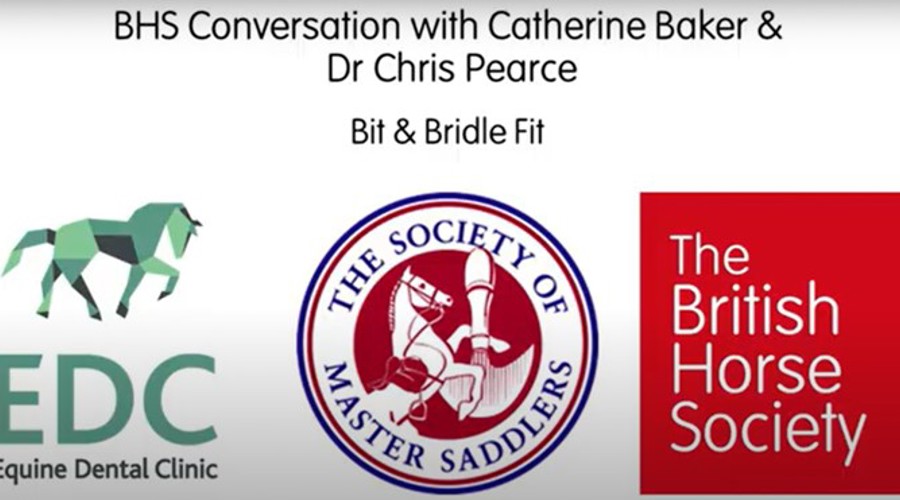 play-circle
play-circle
Watch
BHS Conversations - How well does your horse’s bit fit?
Mouthpiece
The mouthpiece sits inside the horse’s mouth across the tongue. The shape of the mouthpiece influences where the pressure is applied. A straight mouthpiece will place the most pressure across the tongue. A curved or jointed mouthpiece will place less pressure across the tongue and more on the bars of the mouth.
A thicker mouthpiece is considered to be milder than a thin mouthpiece, as the pressure is spread over a wider area.
Find your nearest SMS qualified fitter
For more information about The Society of Master Saddlers and to find your nearest SMS member visit www.mastersaddlers.co.uk or contact on 01449 711642.

